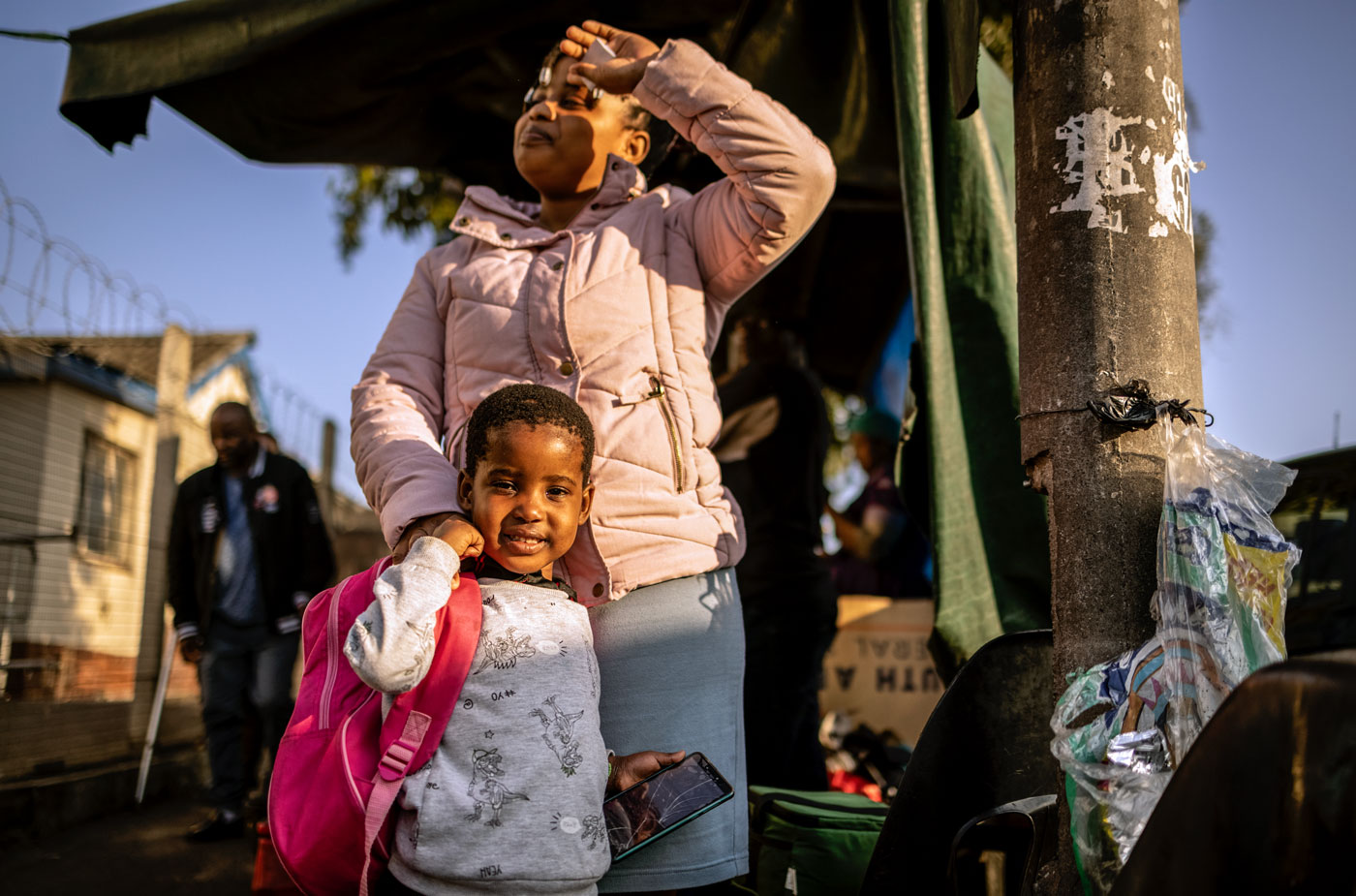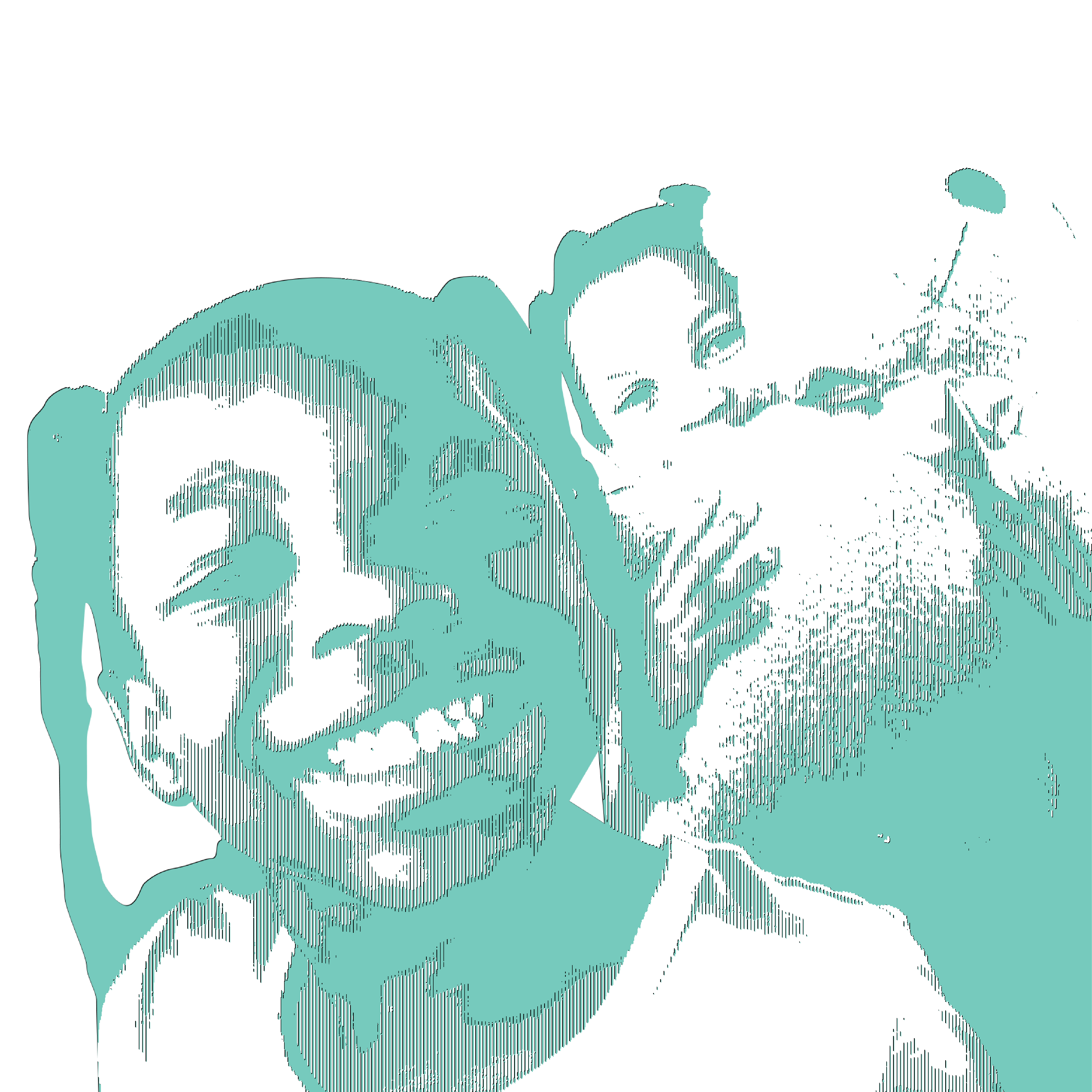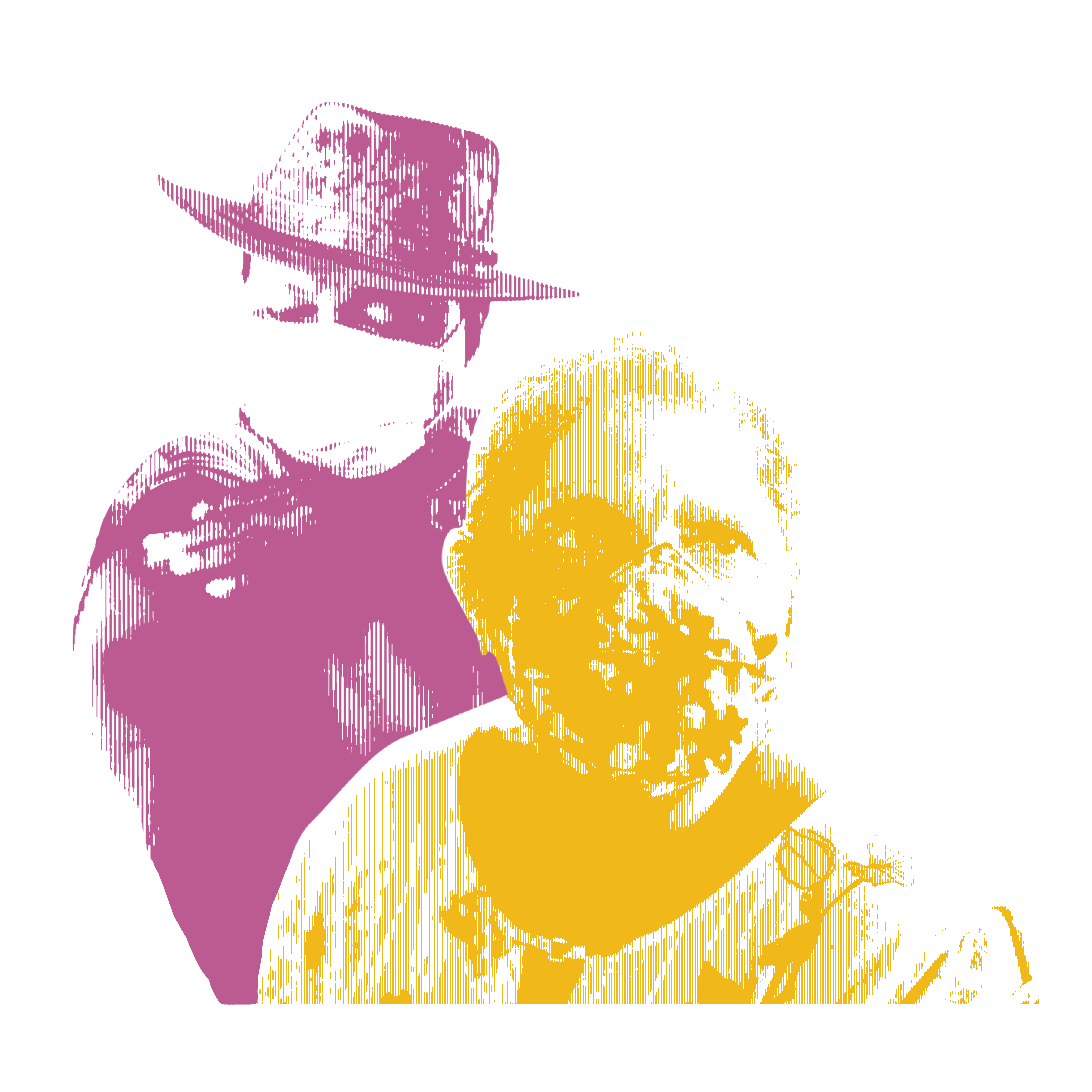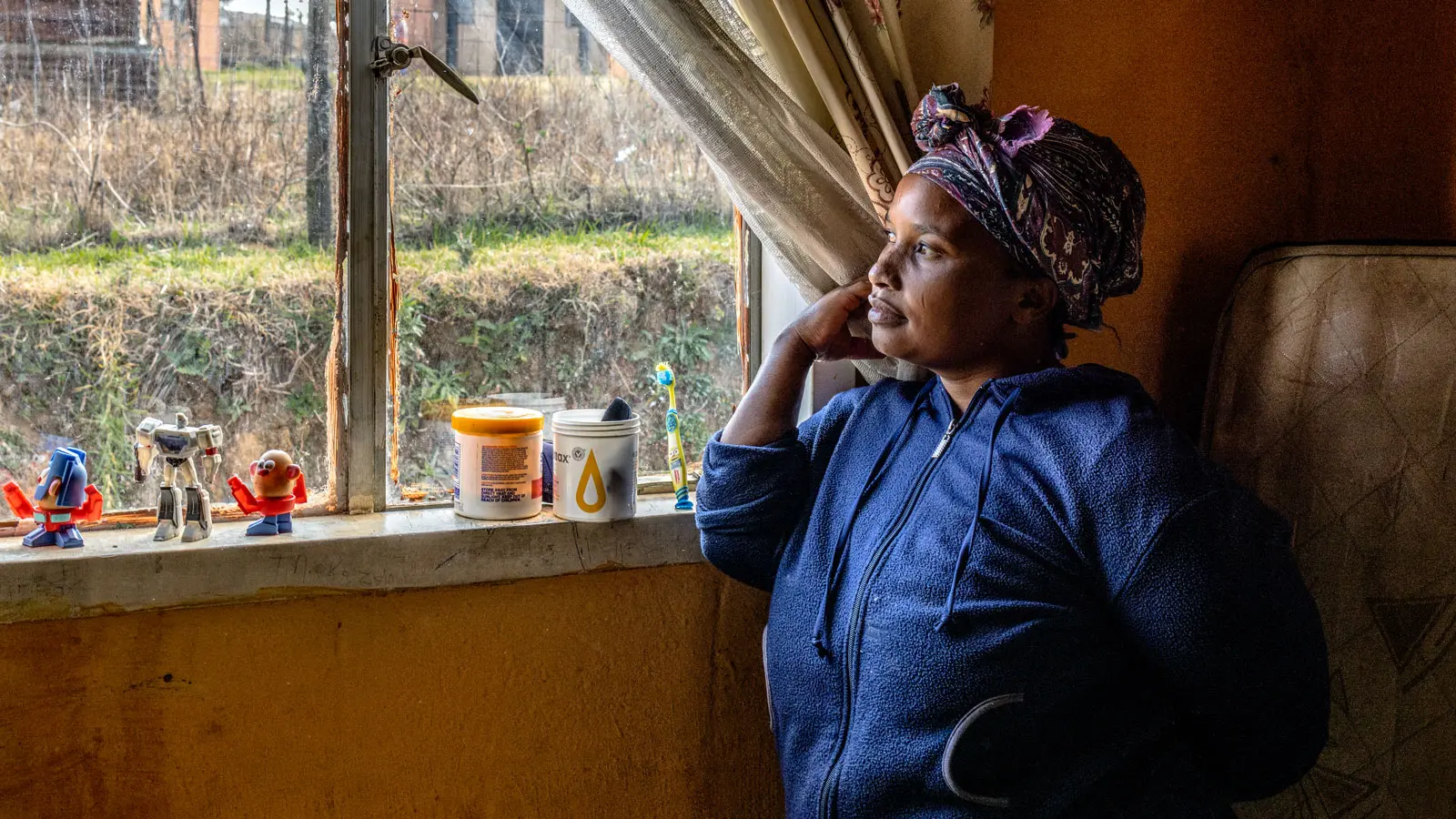
KWAZULU-NATAL, SOUTH AFRICA—By her country’s standards at the time, there was nothing too unusual about how Nosipho Mshengu arrived in the world. She was born on the side of the road on 20 September 1993, as her mother tried to get from Mafakatini, a rural village in South Africa where there was then no health facility, to a Roman Catholic clinic an hour away. The bus she awaited was nowhere in sight when time ran out, and Mshengu made her entry then and there.
A little more than 14 years later, Mshengu was pregnant herself. Her labor story was different. Because teen pregnancies are high-risk, an ambulance drove her from the government health clinic that opened in Mafakatini in 1999 to Greys Hospital in Pietermaritzburg, the capital of the province of KwaZulu-Natal. The 41-kilometer trip paid off with a smooth delivery and a healthy baby boy, Esihle, now a teenager.
Unlike her mother, “I had access,” Mshengu said through a translator. “They took me to experts to give birth in a safe, controlled environment. So my child didn’t have any complications. Neither did I.”

As a nonprofit journalism organization, we depend on your support to fund more than 170 reporting projects every year on critical global and local issues. Donate any amount today to become a Pulitzer Center Champion and receive exclusive benefits!
It has been nearly 30 years since the demise of apartheid, the system of forced racial segregation and institutionalized discrimination that white South Africans created in 1948 and fought to defend until the early 1990s. Apartheid disenfranchised people who were not white, denied them job opportunities, and forced many black men to live in blighted townships beside whites-only cities, while their families languished in distant rural “homelands.” Among the many devastating effects of apartheid on black South Africans, its harm to children’s health stood out.
In 1994, as apartheid ended, 60 of every 1000 babies born in South Africa died before their fifth birthday. (In the United States at the time, the number was 10.) The death rate was so concerning that after Nelson Mandela’s African National Congress handily won the country’s first multiracial election that year, the new president immediately announced health care would be free for pregnant women and young children. It remains that way today in the nation of more than 60 million, of whom 81% are black and 36% are younger than 20.
In 1986, when the apartheid regime was still ruthlessly quelling dissent, I spent 2 months in South Africa as a visiting medical student studying pediatrics. I worked on the pediatric wards at the King Edward VIII Hospital, a huge, decrepit Durban hospital where black people* were obligated to seek care and, briefly, in a small rural hospital far from the city. I saw toddlers suffer and die from vaccine-preventable diseases such as measles, a “typhoid isolation” unit that consisted of a crib placed in a corner of an open ward, and newborns crammed four to a bassinet. I also saw white children receive high-end care at a segregated beachfront hospital across town. The experience altered my career trajectory, sending me toward journalism and away from clinical medicine, which was so clearly outgunned in the face of a brutal political system.
I have often wondered, since the great democratic changes of the early 1990s, how pediatric health care has fared in the new South Africa. In July, I went back to find out.
THE DURBAN where my plane lands is different from the one I remember. The Indian Ocean seaport of more than 3 million then showcased a beachfront of glamorous hotels and restaurants, exclusively for white people. Now, the city’s core has deteriorated markedly, blighted by riots last year. They were sparked by political divisions and fanned by a yawning economic divide between rich and poor, the largest in the world when last measured in 2014. Corruption has hobbled public services, resulting in daily electricity outages and perennial water shortages. Crime is rampant. And although democracy has elevated a substantial black middle class, the face of South African poverty remains overwhelmingly black. This shows up in the health care system, where there’s high-end private care for those who can afford it and largely free but beleaguered public facilities for those who cannot.
Yet apartheid’s collapse also ushered in transformative changes in health care that went well beyond free services for pregnant women and young children. Within a few years, Mandela’s government launched a national immunization program to replace one that required “homelands,” where black people lived, to have separate vaccination schemes. It built 1345 community health clinics and refurbished another 263—today there are more than twice as many—while making primary health care free to all. The government launched programs and passed laws aimed at making clean water and sanitation universal. The proportion of the population with access to a flush toilet, a ventilated pit latrine, or a composting toilet rose from 73% to 93% between 2000 and 2021, according to estimates from UNICEF.


All of this has fueled major gains in child health 30 years later. The under-5 mortality rate fell by nearly half, to 32 deaths per 1000 live births, by 2020. (In the United States today, the figure is 6.3.)
But a nuanced picture emerges when I visit the medical campus of the University of KwaZulu-Natal (UKZN), in Durban. It sits next to the sprawling 17-hectare site of King Edward. (The hospital is soon to be renamed for Victoria Mxenge, a nurse, midwife, lawyer, and antiapartheid activist murdered by agents of the regime in 1985.) Moherndran Archary, a pediatric infectious disease specialist, has worked at the hospital and the Nelson R. Mandela School of Medicine almost continuously for 3 decades, and has seen the easing of some of the misery I remember.
I think back to a 5-year-old boy I saw in 1986 with a raging case of measles that had invaded his lungs. The doctor supervising me, speaking Zulu, asked the boy’s mother whether the child had been vaccinated. “She says it’s a long wait at the immunization clinic,” he translated for me, shaking his head. At the time, just 64% of South African 1-year-olds had received a first dose of measles vaccine.
Today, Archary tells me, such children rarely turn up on the pediatric wards. Last year, 87% of babies received a first shot for measles, according to estimates from UNICEF—an all-time high. South Africa has also been a continental leader in introducing vaccines against bacteria that cause meningitis and pneumonia, and against rotavirus, which can cause fatal diarrhea in young children.
Sanitation improvements begun under Mandela also helped children stay healthy. When Archary began as a medical student at King Edward in 1991, “we had an entire ward of gastroenteritis,” life-threatening diarrhea caused by various microbes in unclean water. That ward no longer exists, and although gastroenteritis remains a leading cause of hospital admission for young kids, the numbers are far lower than they were. “Cholera is a rarity,” Archary adds, and in the past year he estimates he’s seen one child with typhoid fever, another dangerous water-borne disease that was once commonplace.
But Refiloe Masekela, a specialist in pediatric lung disease who heads the medical school’s pediatrics department, is troubled by other conditions that land children in her hospital. Vaccination coverage isn’t as good as it appears at first blush, she says, because it falls off in kids more than a few months old. By age 2, she tells me, only about 70% of kids in KwaZulu-Natal are up to date with their vaccines.
Chronic malnutrition, meanwhile, is widespread. Twenty-seven percent of children under age 5 were growth-stunted in 2016, the same fraction as in 2003. And the COVID-19 pandemic—a “catastrophe” for kids, Masekela says—worsened malnutrition because schools, where many children get daily meals, were closed and parents lost their jobs. At King Edward and outlying provincial hospitals, pediatricians like her are again starting to see patients with acute malnutrition—their ribs in stark relief, their eyes gigantic in sunken faces.

For Masekela and Archary, statistics like these underscore a painful reality: The end of apartheid didn’t help black people as they had imagined it would. “South Africa has such an ingrained system of racial disparity, it has now translated into economic disparity,” Archary says. “The economic disparity is still along racial lines.”
MAFAKATINI, where Mshengu was born at the side of the road, nestles in the hills of rural KwaZulu-Natal, the province with the leading HIV burden in a country with one of the highest HIV burdens in the world. I travel there in a van belonging to the Centre for the AIDS Programme of Research in South Africa, which everyone calls CAPRISA. It’s based at the UKZN medical campus in Durban but has research clinics elsewhere, including one in this village of 8000, where some people work as cashiers, drivers of taxi minivans called combis, and domestic workers although most are unemployed.
The deeply rutted dirt road disappears before we reach the edge of the village. There, I find 14-year-old Sandiswa Zondi outside her family’s windowless wooden hut. It lacks electricity and running water and looks out on a parched valley; somewhere on the far side, her grandmother is searching for firewood. Sandiswa isn’t at school on this winter Wednesday because her parents, who work on a flower farm 45 kilometers away, couldn’t spare 10 rand—58 cents—for her and her 9-year-old brother to take a combi to get there. Sandiswa likes school and wants to become an airline pilot. She also yearns for her family to have a proper three-room house and intends to “stay away from boys,” she says through a translator.
Her resolve is well placed. At Sandiswa’s age, HIV prevalence in South African girls is about the same as it is in boys; by the time young women reach their early 20s, it’s nearly 16%, three times what it is in young men. And by the time they get pregnant, 41% of girls and women at prenatal clinics in KwaZulu-Natal test positive for the virus. Nationwide, the figure is 30%. It hasn’t budged in at least 15 years.
For girls like Sandiswa, who are almost always powerless to negotiate the use of condoms, it’s crucial to have a means of protection that they themselves control, such as preventive antiretroviral pills, says Quarraisha Abdool Karim, an infectious disease epidemiologist at CAPRISA. Karim was a senior author on a landmark study in KwaZulu-Natal showing the cycle of HIV transmission is maintained by older men infecting younger women.

For decades, Karim has borne witness to South Africa’s handling of the AIDS epidemic and its impact on teen girls. Mandela’s administration largely ignored the virus in the 1990s; he became outspoken about fighting HIV only after leaving office. And in 1999, Thabo Mbeki, an AIDS denialist, became president. Mbeki for several years refused to provide antiretroviral drugs to pregnant women and other infected people. The result: In the late 1990s and the early 2000s, about one in three infected pregnancies resulted in a baby with HIV, and child mortality rates skyrocketed (see graph, below). “Just as we were reaping the benefits of democracy, HIV swoops in and robs us of it,” recalls epidemiologist Salim Abdool Karim, CAPRISA’s director, and Quarraisha Abdool, Karim’s husband. “And it wasn’t pharmaceutical companies charging too much. It was your own government.” (Mbeki was forced out of office in 2008.)
Today, children in South Africa are faring far better when it comes to HIV, says Daya Moodley, a research scientist with CAPRISA and UKZN, who has spent decades seeking to prevent mother-to-child transmission. Thanks to an aggressive program that tests pregnant women at prenatal clinics and treats those infected with HIV, mother-to-child transmission is rare, occurring in less than 3% of infected pregnancies. On the horizon are long-acting, injected antiretroviral drugs such as one called cabotegravir, which was recently recommended by the World Health Organization after protecting women from infection in an African clinical trial. If such drugs can be deployed in at-risk girls and young women, Moodley says, they “will have a huge impact,” reducing maternal infections and the resulting risk to babies. But she notes that high hurdles remain to distributing the drugs, and in sub-Saharan Africa, “we’re always at the end of the stick to receive any effective and cost-effective treatment.”
EVEN AS PREVENTABLE causes of death including AIDS, measles, and gastroenteritis have declined in young children, their early days are still perilous. Perinatal mortality—death late in pregnancy or in the first week of life—remains stubbornly persistent. As other preventable deaths have declined, data from Statistics South Africa indicate that perinatal mortality has become the leading cause of under-5 mortality. Prematurity, high maternal blood pressure, infections, and trauma during birth are all causes.
Halting progress
Mortality in South African children younger than 5 years old shot up after apartheid ended in the early 1990s, as a devastating epidemic of HIV/AIDS took hold. Treatment of infected pregnant women, along with improvements in sanitation and vaccination, has improved the outlook over time.

As a medical student I witnessed one such death in a small hospital in remote KwaZulu-Natal. A young woman labored and her baby’s feet emerged first, soon followed by the legs, torso, and arms. The doctor tried in vain to deliver the baby’s head. I watched with mounting horror as the little body hung limply while pulsations in the trapped umbilical cord slowed and then stopped.
In the awful silence, the doctor moved to stand beside the woman’s shoulders. Without looking her in the eye he told her what had happened, and what needed to happen now to save her life. He used local anesthetic and cut the cartilage that binds the pubic bone together at the midline, widening the birth canal to deliver the head. When it at last emerged, it was clear the baby had hydrocephalus, a buildup of fluid on the brain, which caused an enlarged head. Hydrocephalus is common in spina bifida, in which the neural tube fails to close in early development. This infant had that condition, too. (Rates of spina bifida began to fall soon after South Africa began fortifying food staples with folic acid in 2003.)
“The mother was inconsolable,” I wrote in my journal that night.
Since 1986, South Africa’s rate of neonatal mortality—death in the first 28 days of life—has fallen by more than half. But those gains have stalled in the past decade, as has the rate of stillbirths. That’s in spite of the country’s strides in prenatal care. Seventy-six percent of pregnant women and girls completed at least four prenatal visits in 2016, and about 96% delivered their babies in health facilities. Still, numbers are uneven across the country; in KwaZulu-Natal, too few visits at prenatal clinics are a problem, Masekela says. And a large 2015 study of perinatal deaths in the province of Mpumalanga suggested subpar care during labor and delivery was also a factor.
IN MALUKAZI, a squalid settlement of shacks with corrugated iron roofs on the southern fringe of Durban, a charity clinic copes with fallout from the conditions that babies face at home. The clinic, run by the Islamic Medical Association (IMA), sees a parade of crying toddlers with vomiting, diarrhea, and fever. Nurses take weights and temperatures and dispense acetaminophen, antibiotics, and oral rehydration therapy for diarrhea. On the day I visit, none of the small patients is in need of hospital admission: Their eyes are moist and their skin snaps elastically back into place when pinched, rather than tenting, as happens in cases of severe dehydration.


Sister Honey Allee, IMA’s nursing director, is 76, with a mischievous smile, a white hijab, and a white suit with purple epaulets. She makes no effort to hide her disgust with the democratic government’s failure, after nearly 30 years, to provide basic infrastructure for the inhabitants of Malukazi and other squatter settlements. This, she is sure, ensures that diarrhea remains a killer of small children in South Africa. It also means the clinic’s nurses see an endless stream of children with scabies and skin abscesses from playing in the garbage-strewn landscape and urinary tract infections because they wipe their bottoms with newspaper fished out of refuse piles.
For the poorest of the poor, little has changed in the new South Africa, Allee says. “I feel—excuse me—the square root of bugger all is provided” by the government. “We don’t have a place that’s really fit for human habitation,” she adds. Her charity has, among other things, dug boreholes and installed water taps in the shantytown, which lacks reliable running water.
Several of the women who have brought their charges here today share her lack of faith in the system. Nokwanda Mkhize took a 45-minute combi trip with a vomiting 8-month-old daughter and feverish 9-year-old niece, rather than using a free government health clinic a little closer to home. At IMA, she is charged a nominal fee that’s well worth it, she says. “I prefer their service and they have medication to help the baby.”
Her sentiments are echoed by Samkelisiwe Ndlovu, who has borrowed taxi fare from a relative in order to bring her daughter to the clinic from the four-room house that she shares with 11 people. The baby girl screams, perhaps from the rash that covers her groin and armpits. Yesterday, Ndlovu tried a government clinic and was told to go buy her own paracetamol, the generic form of Tylenol.
I’VE WAITED IMPATIENTLY for days to cross the threshold of the hospital that so influenced my life’s trajectory: King Edward. When I think of the place, I remember the pediatric ward with its peeling paint, rats scurrying between dilapidated buildings, and a toddler with measles we found dead one morning under her oxygen tent. Her chart read: “Respiratory distress. Needs artificial ventilation. No beds available in intensive care unit.”
Now, the hospital includes a gleaming pediatric center, with a sophisticated neonatal intensive care unit (ICU), a resuscitation room, and a pediatric emergency department, built with charitable donations. But permission to access King Edward and see for myself how conditions have changed doesn’t come. So early one morning I stand outside, approaching patients in line to hear their stories.
Twenty-four-year-old Anele Macanhe is looking exasperated. She has forgotten the appointment card that would grant her access to the gated grounds of the 852-bed public hospital. Her phone to her ear, she is asking her partner to text her a photo of the card.
Macanhe’s 4-year-old daughter, Sbahle Thunzi, who is standing by with her pink backpack, has eczema, which has turned her knees several shades darker than the rest of her skin and also afflicts her elbows, hands, fingers, and face. Her mother brings her regularly to the hospital, where a doctor examines Sbahle and refills her medications at no cost.
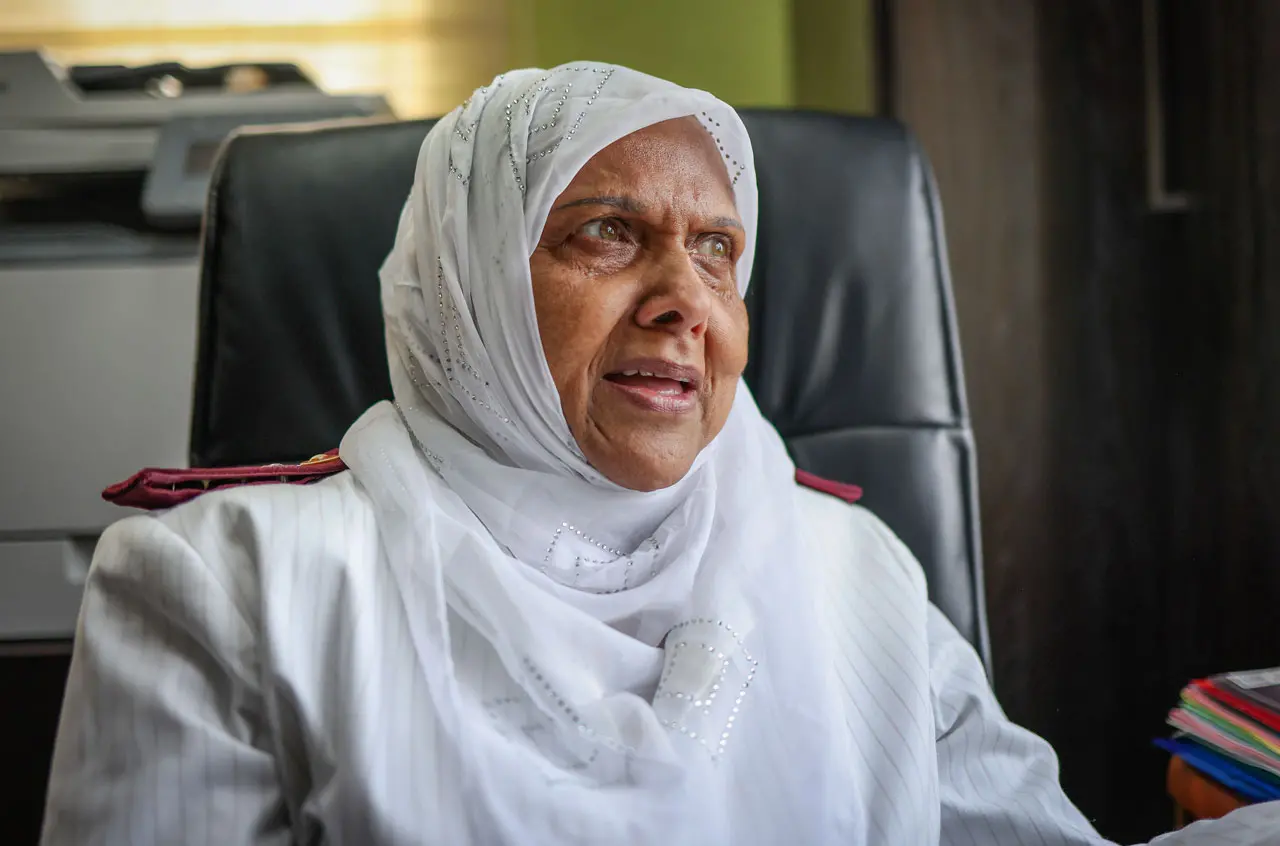
This Macanhe appreciates. She earns $250 each month working at a call center and cutting hair on the side. She also has an infant son to support. Today’s trip will cost her $2.86 for roundtrip bus fare—plus a day’s wages, because visits to the hospital inevitably take hours.
“They help us without paying if you don’t have money,” she says. “Our government is looking out for us.” (Patients at King Edward, as at other public hospitals, are charged on a sliding scale and many pay nothing.)
On the other hand, Macanhe concedes, she would take Sbahle to a private hospital if she could afford it. The crowding at King Edward is bad, the waiting times long, and medications are often out of stock. “The doctor prescribes 10 things and you get five,” she says.
Inside and out, the hospital is a study in contrasts. Despite the high-end pediatric facility, government and press accounts report broken CAT scanners and raw sewage running in the gutter beside the hospital. According to a 2017 report, when a government team visited King Edward, patients were being carried up to the fifth-floor surgical ward because an elevator was broken. “The food is bad. The cleaning is bad. The bedding, linen service is nonexistent,” says Allee, who sometimes accompanies patients there.
King Edward is not alone. The government team in 2017 visited three other Durban-area public hospitals and reported similar problems at all of them. And this past spring, a physician at a children’s hospital in Johannesburg wrote in an open letter to administrators: “Come to our unit and see doctors trying to intubate children and administer [CPR] by their mobile phone’s torch, as the power has failed … again. … Come and see how hospital-acquired infections spread like wildfire through the neonatal ward because the taps are dry. … Children are dying and the horrendous conditions in our public hospitals are contributing to their deaths.”
“Our health care services are on a path to ruin,” Salim Abdool Karim says. He was assistant superintendent of King Edward in 1990, an era when “white managers barked orders at black staff,” he recalls. Apartheid’s end thankfully made that model of management a thing of the past, he says. But he contends that it’s been replaced by a system with its own deep troubles. “Corruption has thrived, because of ineptitude and ineffectiveness in management. So across the board, the provision of services and the quality of care has been compromised.”

The head of the province’s health department, Sandile Tshabalala, did not respond to repeated requests for permission to visit the hospital or to emailed questions. But King Edward’s CEO, Thami Mayise, wrote in an email: “My team is doing the best they can, given the circumstances they operate under.”
It’s also worth noting that children with serious ailments can receive high-end care in the public system. Still, Masekela notes, there are just 23 ICU beds for more than 3 million children in KwaZulu-Natal province.
Macanhe and her daughter leave King Edward that day around noon with a neighbor they bumped into, saving Macanhe from spending precious rands on taxi fare. It was a good visit: On her lap is a plastic bag stuffed, for once, with 10 out of 10 eczema medications.
That evening, as my plane lifts off from the tarmac, my heart is heavy. I think of Mshengu and her risky roadside birth in apartheid’s twilight, and her own son’s safer entry into the world years later. The numbers make clear that black children are doing better than they were in the 1980s and early ’90s, when the apartheid regime compounded their suffering. But hunger, disease, and death still shadow many of them.
Today, “The primary problem is a socioeconomic problem,” Masekela told me. “When you don’t have access to clean water or electricity; when you’re living in a crowded space and you have no food—that cannot be fixed by the health system.” Meanwhile, children like would-be airline pilot Sandiswa, earthbound in her dusty village, are still waiting for a better day.
*Note: Science capitalizes Black to acknowledge the ethnic and cultural identity of Black Americans. Many South Africans use “black people” to refer to people of African descent, a style we follow here.


